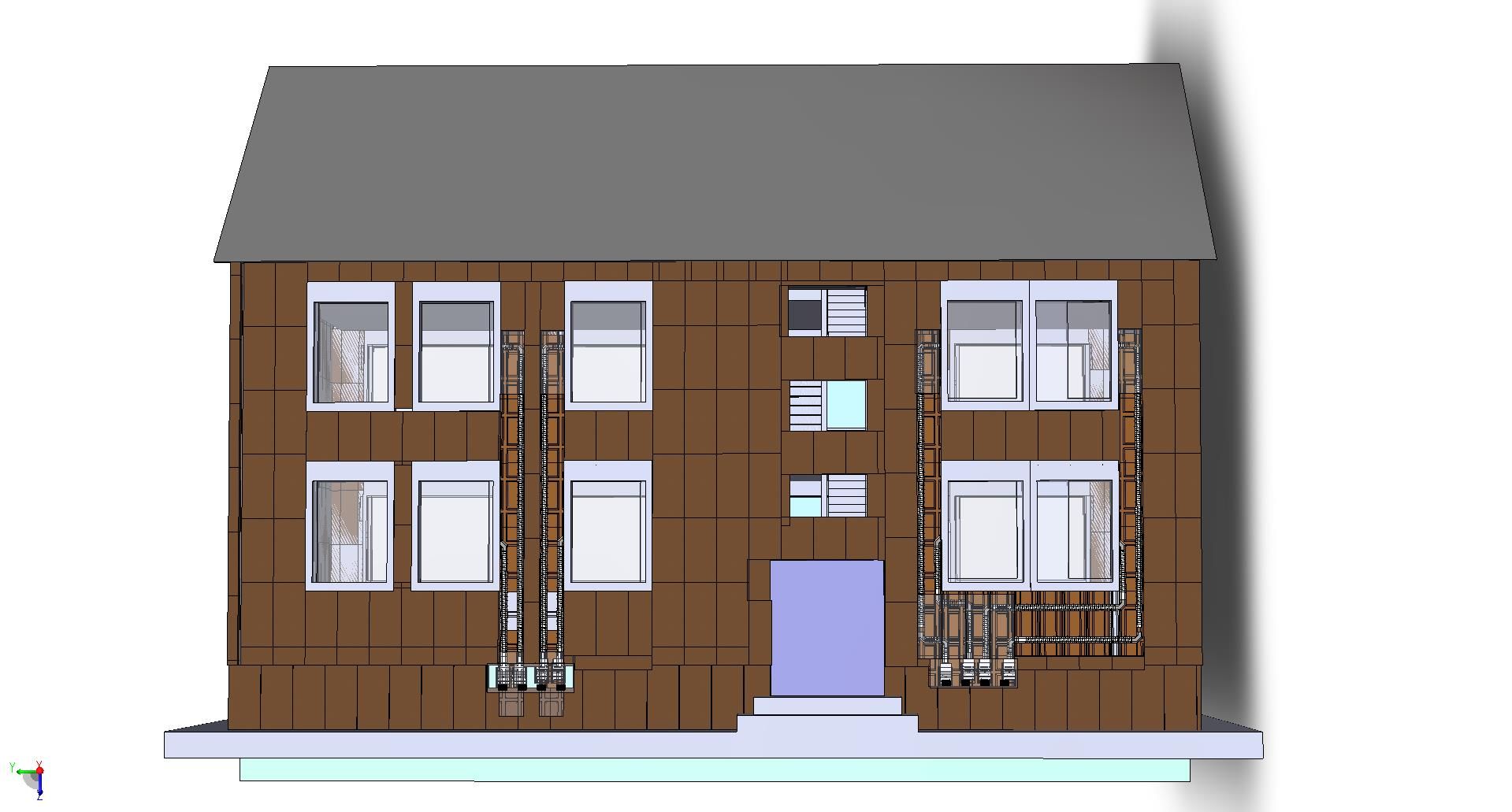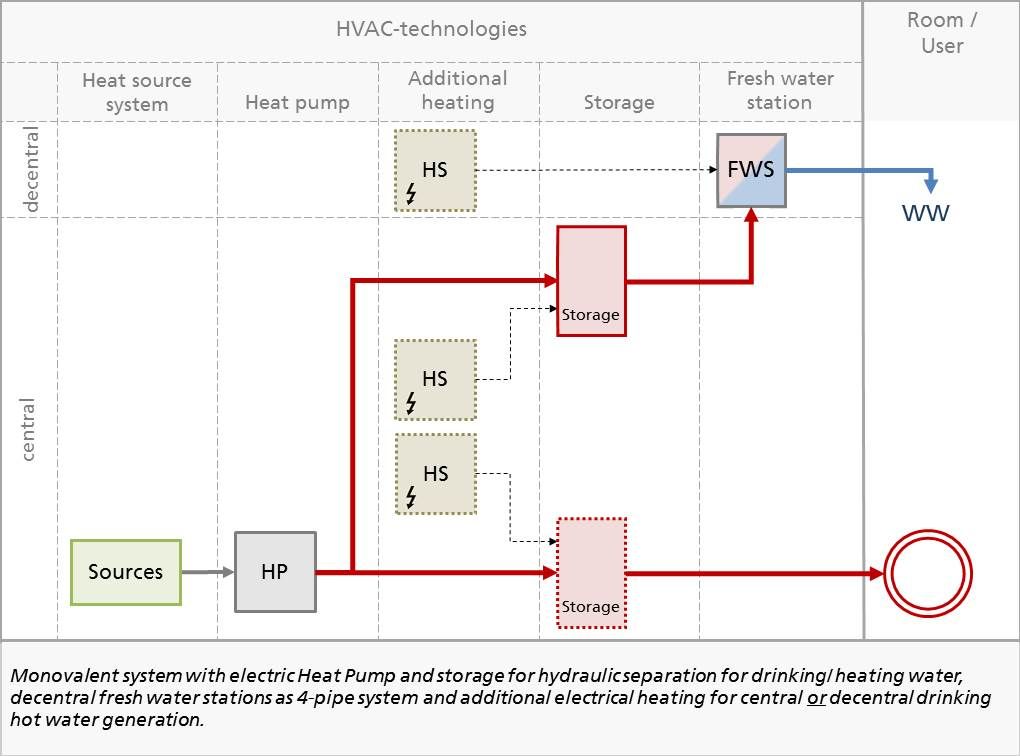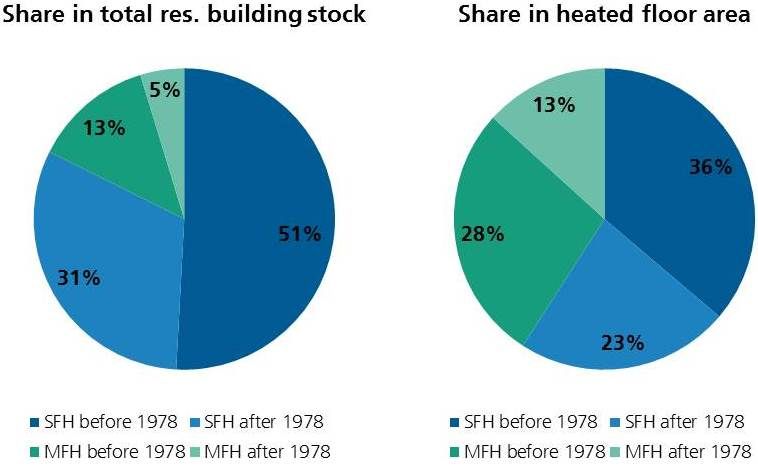| Duration: | 06/2016 - 05/2021 |
| Contracting Authority/ Sponsors: | Federal Ministry for Economic Affairs and Energy (BMWi) |
| Project Partners: | Karlsruhe Institute for Technology (KIT) |
| Website: | Low-Ex-Stock |
| Project Focus: |
LowEx-Stock Analysis
LowEx-Concepts for the Heat Supply of Existing Multi-Family Houses



The massive reduction of the specific CO2-emissions (decarbonisation) of heat supply technologies is a central lever to achieve the long-term climate change policy goals of Germany, including the goal to achieve an almost climate neutral building stock. Electrical and fuel-driven heat pumps have an enormous potential to reduce the specific CO2-emissions for the building heat supply. At the same time, they have a large potential for use in energetically refurbished buildings. However, there are special technical requirements related to heat transfer systems for space heating and hot tap water generation (heat sinks) as well as the exploitation and use of environmental heat (heat sources). In the project LowEx-Bestand low exergy system concepts for existing multi-family houses (MFH) are analysed comprehensively, enhanced and demonstrated.
Part of the project(s) are multi-level activities – from the analysis of the existing stock of multi-family houses, the refurbishment processes and typing of LowEx-concepts via the service life analysis of weathering conditions on façade elements close to the market demonstration of technical solutions and their economic analysis. In the superior analysis part of the project system concepts are assigned to MFH-building types and types of refurbishment processes under the consideration of the achievable (and required) user comfort, economic aspects as well as the achievable emission reduction and systematically analysed and assessed. The aim is to enhance and newly develop low exergy concepts and systems, increase their economic feasibility, ensure the operation quality and therefore contribute to a faster market uptake of the concepts and systems.
In the demonstration part of the project, the heat pump systems and components, which are newly developed and/or enhanced in the different associated technology development projects, are demonstrated as “LowEx-Bestand” in exemplary refurbishment projects in combination with selected heat sources, storages and heat transfer systems. In the demonstration projects, a detailed monitoring will be carried out in order to scientifically evaluate the projects and compare the results to detailed simulation studies. The aim is to enable a well-grounded comparison of the system concepts.
The following central goals are formulated for the project group:
- Analysis of the MFH-building stock with regard to the application of low exergy systems: stakeholders involved in and processes for refurbishment, identification of technical requirements for the energy supply of MFH as well as description of non-technical framework requirements and influencing factors of/ for the refurbishment processes.
- Identification, systematisation and assessment of system concepts for the application of the developed technologies/ components in existing buildings: holistic analysis of the heat supply from the low-temperature heat source to the heat supply to the rooms under consideration of the potential of the solarisation of the building envelope; answer questions concerning heat source combinations, the need of heat storages, exploitation of heat sources, cascading of heat generators and evaluation of bivalent systems with regard to new technological developments; identification of comfort boundary conditions of the systems through experimental analysis.
- Comparative simulation of the developed technologies and their integration in the heat supply system of MFHs as well as the comfort parameters depending on different heat transfer systems; a broad simulation study provides expectancy values (characteristic energetic factors) as a basis for a continuative techno-economic assessment of low exergy technologies in MFHs.
- Close to the market demonstration of the heat supply technologies developed in the associated technology projects under real operation conditions in existing buildings; the demonstration projects will be monitored in detail for a comprehensive assessment; a cross-analysis of the performance of the demonstrated LowEx-systems and refurbishment processes will be carried out.
The economic feasibility will be evaluated and assessed under the consideration of the different perspectives of involved stakeholders.